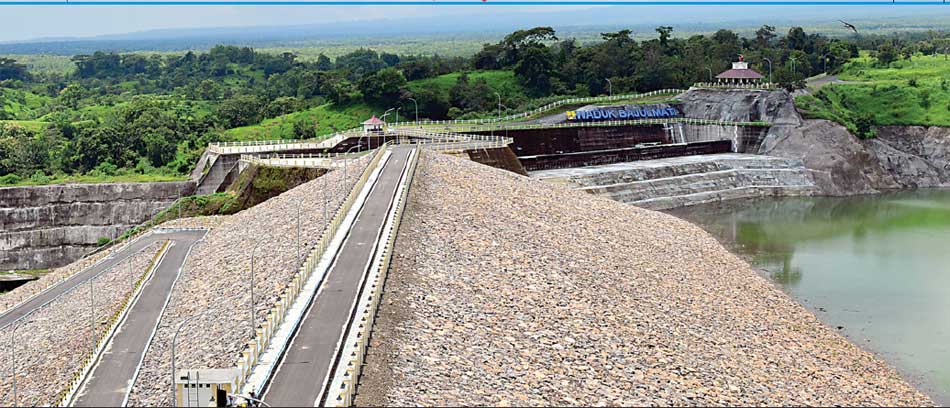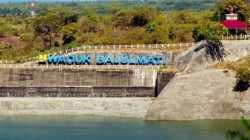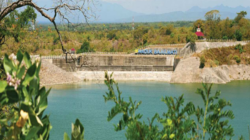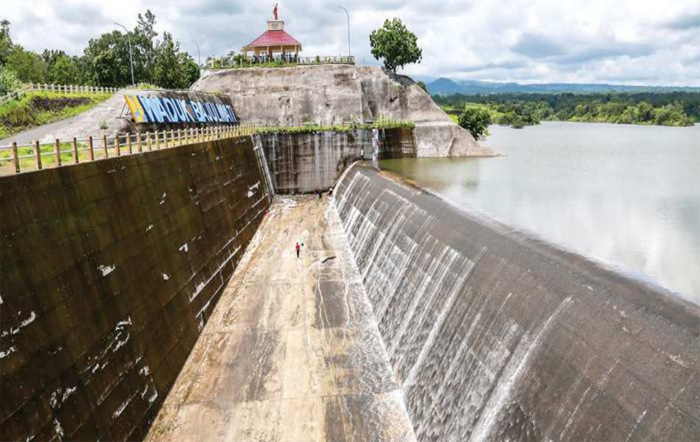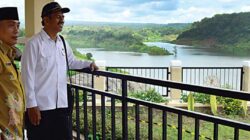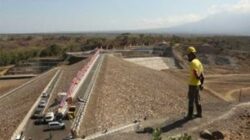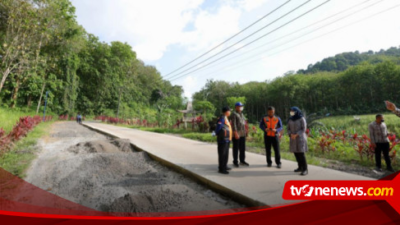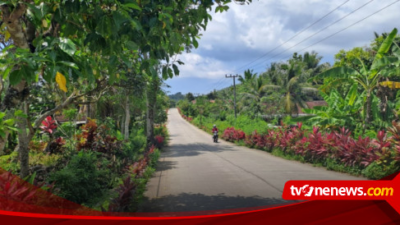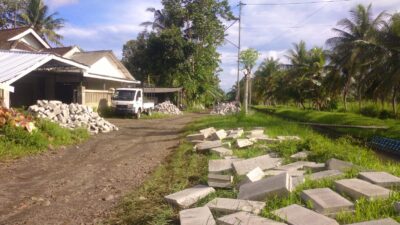BUILD since 2006, Bajulmati Reservoir located in Bajulmati Village, Wongsorejo District, is projected to be able to irrigate 1.800 hectare (Ha) land. Definite, Agricultural lands in the Wongsorejo area will be helped by the presence of the Bajulmati Reservoir.
Because, water from the reservoir flows deep into the villages in Wongsorejo. If the dam 10 million cubic meters of water is operating, Rice fields in the northern part of Banyuwangi which so far can only be harvested once a year will be harvested at least twice per year.
The construction of the Bajulmati Reservoir went through a long study phase. The site survey was carried out in 1980 and feasibility studies on 1984. Next, carried out an analysis of environmental impacts (amdal) and the socioeconomic impact on 2004.
After that, the land acquisition process is carried out in stages until the year 2006. After land acquisition is complete, the initial work is carried out on 2006, namely the construction of tunnels to avoid water flow and rehabilitation of primary canals along four kilometers (km).
Phase II construction will start in November 2008 through excavation and foundation work. On 2010, The construction process was stopped because there was a revision of the foundation design because the foundation that had been built was experiencing seepage.
Next, foundation construction continued on 2011. Until finally the construction of a reservoir with an area of inundation reached 91,93 Ha that's the end of the year 2015. Even though the physical construction is complete, The reservoir, which is located on the border of Banyuwangi and Situbondo, is not automatically able to provide benefits to the surrounding community.
To get to that stage another important step is taken right 1 December 2015 through pre-filling activities (impounding) Bajulmati Reservoir. The initial filling was marked by the closing of the tunnel door to prevent the flow of water by the Director General (Director General) Water Resources Ministry of Public Works and Public Housing (PU-Pera), Mudjiaji.
Now four months after the filling process started, The reservoir that dams the Bajulmati River, which originates from Mount Ijen, is almost full. The height of the puddle in the reservoir has been 77,5 meters from the total height of the weir's lighthouse which reaches 90 meter.
It means, reservoir that will be able to irrigate 1.400 agricultural land in the northern Banyuwangi region and 400 the land in the Situbondo area can immediately be operated. Previously, The Commitment Officer for the Bajulmati Reservoir, Amos Sangka, said the reservoir would be optimally filled in March or April.
The Bajulmati Reservoir utilizes the springs of the Bajulmati River, which originates in the Mount Ijen area. "We estimate that around March-April this reservoir will be optimally filled. During this dry season, the river discharge is only 1,5 meters per second, but around the end of December, which has entered the rainy season, we predict the discharge of the Bajulmati River will reach 100 cubic meter to 300 cubic meters per second,"he said, confirmed at the impounding event of the Bajulmati Reservoir in early December.
Meanwhile, Head of Public Works Dinas (COULD) Banyuwangi irrigation, Thunder Priambodo, say if Bajulmati Reservoir is fully filled, then the dam can be utilized as much as possible by the community.
"Currently, the development of a two-kilometer secondary network is still being carried out to connect the Bajulmati Reservoir with the residents' agricultural land," he said. Still said Thunder, Bajulmati Reservoir will irrigate later 1.800 agricultural land—both rice and secondary crops—in the Banyuwangi and Situbondo areas.
“After there was Bajulmati Reservoir, area of agricultural land that can be drained of water 1.800 Ha with IP 300 percent. Two micro-hydro will also be built in Watukebo Village and its surroundings,” said the doctor of environmental engineering, the ITS graduate. (radar)
